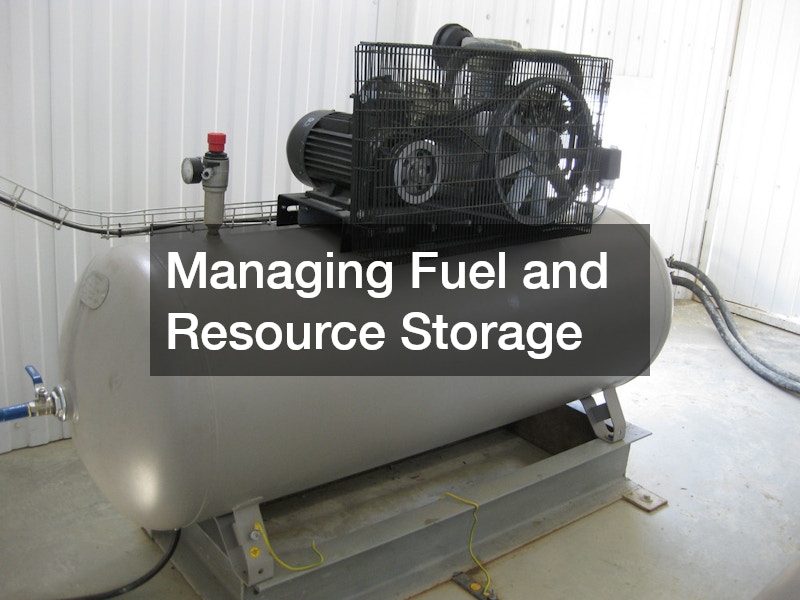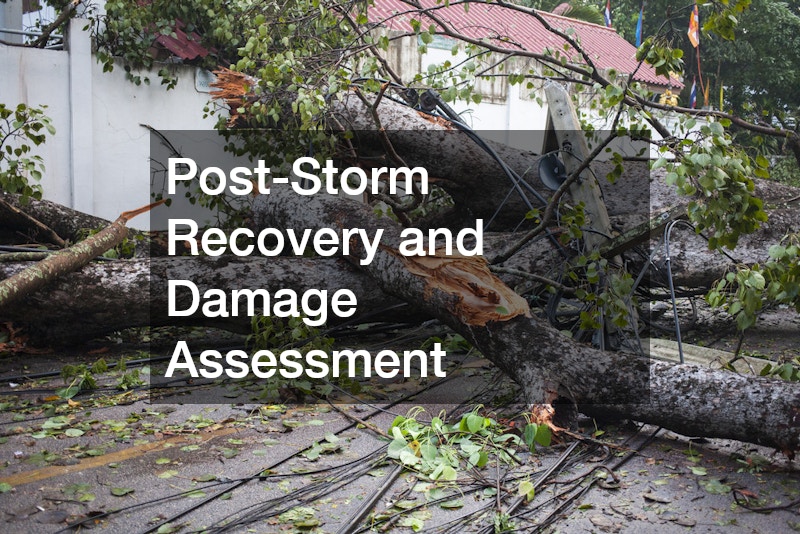Severe weather can strike at any time, bringing heavy rain, strong winds, flooding, or even tornadoes. Whether you live along the coast, in a tornado-prone region, or in an area with harsh winters, having a plan in place is crucial. Homeowners who invest in home storm preparedness not only protect their property but also safeguard their family’s well-being and financial stability. Preparing your home before disaster strikes can reduce costly damage, ensure quick recovery, and give you peace of mind during uncertain conditions. From structural reinforcements to emergency supplies, a proactive approach is always more effective than reacting once the storm has already begun.
This comprehensive guide covers essential steps every homeowner should take to fortify their property and create a safer living environment before, during, and after severe weather events. With the right strategies, resources, and services, you can face any storm with confidence and minimize risks to both your home and loved ones.
Assessing Your Property’s Vulnerabilities
The first step in effective home storm preparedness is understanding your property’s specific vulnerabilities. Every home faces unique risks depending on its location, age, design, and nearby environmental factors. A thorough assessment allows you to identify weak points that could become major liabilities during severe weather.
Start by evaluating your roof, foundation, windows, and doors. These are common entry points for wind and water damage. If your roof is nearing the end of its lifespan or has loose shingles, consider scheduling an inspection to ensure it can withstand high winds. Similarly, check your foundation for cracks that could allow water infiltration during heavy rainfall. Basements and crawl spaces are especially prone to flooding, so taking note of dampness or visible water lines can help you prioritize upgrades.
Examine exterior siding and trim for gaps or rot, which can worsen during storms. Trim back trees or branches that hang close to your house, as falling limbs can cause significant structural damage. Make sure gutters and downspouts are clean and properly divert water away from your foundation. Blocked drainage can lead to pooling water, which undermines structural integrity over time.
Next, look at your home’s surrounding landscape. Low-lying areas may collect runoff and increase flood risks. Sloping the ground away from your foundation or installing a French drain can redirect excess water. If you live near a body of water, explore additional flood protection methods, such as levees or barriers. Your assessment should also include utilities like electrical panels and HVAC units; elevating them above flood levels adds another layer of protection.
Lastly, document your findings. Taking photos and keeping written notes about areas of concern will help you create a targeted improvement plan. By beginning with a clear understanding of your property’s current condition, you can prioritize which upgrades or services are most essential in strengthening your home storm preparedness plan.
Strengthening Structural Integrity and Safety
Once you’ve identified vulnerabilities, the next step in home storm preparedness is reinforcing your home’s structure to withstand high winds and heavy precipitation. Even minor improvements can make a significant difference when storms strike.
Roof reinforcements are among the most valuable investments you can make. Consider hurricane straps or clips to secure your roof to the walls, minimizing the risk of uplift. If your home has older windows or doors, upgrade them to impact-resistant versions designed to handle debris and wind pressure. Storm shutters are another excellent defense, especially in hurricane-prone areas.
Exterior siding should be securely fastened and made of durable materials like fiber cement or vinyl. Loose boards or deteriorating wood can easily tear away in a storm, exposing your home to additional damage. For garage doors, which are particularly vulnerable to wind pressure, hire garage builders to install reinforced systems that resist bending and prevent wind from entering and lifting your roof.
Another structural component to review is your home’s foundation. If cracks or leaks are present, consult a waterproofing service to seal gaps and apply protective coatings. This step is especially important for basements or crawl spaces, where water intrusion can cause long-term damage or mold growth. Reinforcing retaining walls, adding sump pumps, and sealing basement windows all contribute to a stronger, drier home during storms.
For areas with frequent tornadoes or high winds, consider storm shelter installations. These safe rooms, built to withstand extreme weather, provide essential protection for your family. Whether built within the home or as a separate structure, shelters meet FEMA standards for impact resistance and can save lives when severe weather hits without warning.
Finally, check your insurance coverage. Make sure your policy includes wind, hail, and flood damage. Many homeowners assume they’re protected, only to discover gaps in coverage after the fact. Reviewing and updating your policy ensures that financial protection aligns with your physical preparations.

Ensuring Reliable Power and Utility Access
Power outages are common during severe weather events. Without electricity, your home can lose heating, cooling, lighting, and essential safety systems. As part of your home storm preparedness plan, securing reliable backup power is a must.
Installing a generator ensures continuity during outages. Seek out generator install services to properly size and connect a system that meets your home’s needs. A professionally installed generator can power vital appliances like refrigerators, sump pumps, and communication devices. Whole-house generators, often fueled by natural gas or propane, provide automatic power restoration within seconds of an outage.
For homes relying on propane, proper storage and access are crucial. Maintaining a propane tank ensures a steady fuel supply for heating and backup systems. Partnering with a propane gas delivery company allows for automatic refills and ensures you’re never caught unprepared when supply lines are disrupted. Verify that tanks are securely anchored and located away from flood-prone areas to reduce risk.
Additionally, protect your electrical system by installing surge protectors and ensuring your main panel is easily accessible. In flood-prone zones, elevate critical systems above expected water levels. Label breakers for quick shutoff during emergencies. Gas lines should also be inspected annually to confirm there are no leaks or damage.
Communications play a vital role during storms. Keep a battery-powered or hand-crank radio on hand, and consider investing in a backup charging system for mobile devices. Solar chargers or power banks can maintain connectivity when traditional power sources fail.
By addressing power reliability in advance, you minimize disruptions and maintain essential functions when the grid goes down. Combining professional installation, proper fuel management, and smart placement of critical utilities helps ensure your home remains functional throughout any storm.
Safeguarding Plumbing and Drainage Systems
When heavy rain or flooding accompanies a storm, your home’s plumbing and drainage systems become critical lines of defense. Proper maintenance and emergency planning in these areas are key components of home storm preparedness.
Stormwater can quickly overwhelm household drainage, leading to backups, leaks, and property damage. To prevent such issues, schedule routine inspections to ensure all pipes, drains, and sump pumps are functioning properly. Blockages or partial clogs can lead to costly failures during heavy rainfall.
If flooding or burst pipes occur, access to emergency plumbing services becomes invaluable. Partnering with a reliable provider ensures you have immediate help to address urgent issues. These professionals can repair breaks, stop active leaks, and restore water flow before minor problems escalate into full-blown disasters.
Another preventative measure is arranging for emergency drain cleaning before storm season. Clearing debris, sediment, and buildup from your system allows for maximum drainage capacity. Gutters, downspouts, and exterior drains should also be kept clear to divert water away from your foundation. Combining clean internal plumbing with exterior water management keeps your home dry even under intense rainfall.
Inspect outdoor faucets and exposed pipes for damage, especially in colder climates where freezing temperatures can compound storm impacts. Adding insulation or shutoff valves reduces risk. If leaks are detected, schedule leak repairs promptly to prevent water damage or mold formation.
Basements, bathrooms, and laundry areas should have backflow prevention valves installed to keep sewage from reversing into your home. Sump pumps should be tested regularly and equipped with battery backups to remain operational during outages. If your property includes a septic system, consider professional inspection and pumping before storm season begins.
A comprehensive plumbing plan ensures that both water flow and waste management systems remain intact when extreme weather hits. By maintaining these systems and partnering with emergency professionals, you strengthen your overall resilience against flood-related damage.
Managing Fuel and Resource Storage
During extended power outages or disruptions, access to essential resources becomes a top priority. Part of your home storm preparedness strategy should include secure storage for emergency supplies, tools, and fuel.
Fuel stability is vital for operating generators, heating systems, and vehicles. If you rely on propane or gasoline, ensure all containers meet safety standards and are stored in ventilated, elevated spaces. Coordinate deliveries with your propane gas delivery provider ahead of storm season to guarantee adequate reserves. Always follow local regulations regarding flammable storage, and keep tanks upright and secured against shifting winds.
Beyond fuel, homeowners often overlook the importance of organized emergency supply storage. Investing in utilizing storage containers can make a significant difference in accessibility and safety. Weatherproof storage bins can house food, first-aid kits, flashlights, batteries, and blankets. Clearly labeling and categorizing items ensures quick retrieval when conditions worsen.
Outdoor tools and maintenance equipment should also be safely stowed. Heavy winds can turn loose items into projectiles, damaging property or injuring people. Store lawn furniture, grills, and yard equipment in a shed or garage before a storm arrives. For larger items like generators or fuel tanks, anchor them securely to prevent tipping or movement. Water storage is another critical consideration. Filling bathtubs or purchasing sealed water containers ensures a temporary supply for drinking, cleaning, and sanitation if utilities fail. Keep purification tablets or filters in your emergency kit for added safety.
Finally, inventory your supplies periodically. Replace expired food, batteries, or medications, and review quantities to ensure you can sustain your household for several days if necessary. Organized and accessible storage not only supports day-to-day convenience but becomes essential during extended emergencies.
Creating Safe Shelter and Family Plans
A solid home storm preparedness plan extends beyond physical protection—it includes personal safety and coordination. Families should develop a detailed strategy outlining what to do before, during, and after a storm.
Start by identifying a safe room or shelter space within your home. For areas prone to tornadoes, hurricanes, or severe winds, investing in storm shelter installations provides maximum protection. These shelters are reinforced to withstand debris impact and pressure changes, ensuring your family remains safe even in the harshest conditions. If a dedicated shelter isn’t available, choose an interior room on the lowest level without windows, such as a basement, hallway, or bathroom.
Establish clear communication methods. Assign responsibilities so each family member knows their role, whether gathering supplies, checking on pets, or securing outdoor items. Designate an out-of-area contact person to relay updates if local networks fail. Keep copies of important documents—like insurance policies and IDs—in waterproof bags for easy access.
Prepare emergency kits with essentials: flashlights, batteries, non-perishable food, first-aid items, and extra clothing. Include comfort items for children and necessary medications for family members. Don’t forget pet supplies if applicable. Plan evacuation routes in advance, noting community shelters and high-ground locations. Keep vehicles fueled, and have maps available in case GPS fails. If your area is prone to flooding, determine when to relocate before roads become impassable.
Regular drills help reinforce these plans. Practice safe sheltering and review evacuation steps with your family each season. This preparation ensures everyone reacts calmly and efficiently when warnings are issued. By combining structural safety with family readiness, you transform your home storm preparedness into a comprehensive approach that prioritizes both property and people.
Post-Storm Recovery and Damage Assessment
The aftermath of a severe storm can be overwhelming. However, a clear, step-by-step recovery process ensures your home and family return to normal as quickly as possible. Post-storm actions are a vital continuation of home storm preparedness, helping mitigate long-term damage and expedite insurance claims.
Begin by ensuring safety. Avoid entering your home until authorities confirm it’s safe. Downed power lines, gas leaks, or unstable structures can create hidden hazards. Wear protective gear—boots, gloves, and masks—while inspecting damage. Document everything thoroughly. Take photos and videos of affected areas before cleaning or repairs. This evidence will support insurance claims and help contractors assess needs accurately. Contact your insurer immediately and follow their reporting procedures.
Address urgent issues first. Standing water should be pumped out, and damaged materials removed to prevent mold. Contact a waterproofing service if basement flooding or seepage occurred; they can dry, seal, and reinforce vulnerable areas. If pipes burst or leaks appear, rely on leak repairs from licensed professionals to prevent further deterioration.
Clear debris from gutters, driveways, and yards to restore drainage. Check your roof for missing shingles, your siding for cracks, and your windows for breaks. For major repairs, hire qualified contractors to ensure quality and compliance with local building codes. Garage builders can assess structural issues if your garage sustained damage, reinforcing doors or frames as needed.
In the weeks following a storm, monitor your home for delayed signs of damage—musty odors, wall discoloration, or foundation cracks may surface later. Addressing these early prevents compounding issues.
Finally, review your overall preparation plan. Identify what worked well and where improvements are needed. Adjust supply lists, service contacts, or shelter plans based on your experience. Recovery isn’t just about restoration—it’s about building resilience for the future.
Partnering with Professionals for Long-Term Resilience
While DIY measures can strengthen some aspects of your property, professional expertise ensures long-term safety and compliance. Partnering with experienced contractors, technicians, and inspectors helps maintain a high standard of home storm preparedness year after year.
For example, certified electricians can integrate backup power systems safely, while licensed plumbers handle emergency repairs that prevent flooding or contamination. Working with generator install services guarantees your backup power is properly sized, grounded, and code-compliant, reducing risk during prolonged outages.
Similarly, emergency plumbing services provide rapid response when pipes burst or drains back up, preventing small issues from escalating. Scheduling emergency drain cleaning before storm season ensures your system remains clear, while leak repairs stop water infiltration before it weakens structures.
Specialists in storm shelter installations can design and build FEMA-approved safe rooms, adding invaluable protection to your home. Meanwhile, garage builders reinforce key entry points, and waterproofing service providers seal basements and crawl spaces to block water intrusion. Even logistical support—such as coordinating with propane gas delivery companies or utilizing storage containers for emergency supplies—plays a vital role in maintaining readiness.
Regular maintenance contracts, inspections, and seasonal upgrades keep your home’s systems running efficiently. Professionals not only execute tasks with precision but also offer guidance on evolving safety standards and regional risks.
Ultimately, investing in expert partnerships transforms your preparation from reactive to proactive. By surrounding yourself with reliable specialists, you ensure your home remains protected against both immediate threats and long-term wear caused by severe weather. True resilience comes from combining knowledge, planning, and professional support—allowing your family to weather any storm with confidence.






